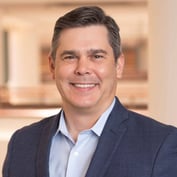Back in 1984, futurist Alvin Toffler was a keynote speaker at the IAFP (forerunner of the FPA) national convention in Anaheim, Calif. At that time, the IAFP owned Financial Planning magazine, where I had been recently hired as a senior editor. For reasons I don’t think I ever knew, I was assigned the privilege of keeping Toffler (author of the seminal book “Future Shock,” and subsequently, “The Third Wave,” “Power Shift” and “Revolutionary Wealth”) company backstage for an hour or so before he was scheduled to speak.
He was a brilliant and charming man, and it was one of the most fascinating hours I’ve ever spent, but I’ve always remembered what he told me about being a futurist: “Nobody can see the future,” he said. “But it’s important to realize that we all live in the past. For some of us, it can be days or months, and as we get older, it often becomes years or even decades. A futurist’s job is to understand what’s going on as close to the present as possible, which gives him or her insights that most people don’t have.”
I was recently reminded of Alvin Toffler’s thoughts about the present as I was reading through Mark Hurley’s new white paper, “The Brave New World of Wealth Management.” It’s Hurley’s third white paper on the future of the independent advisory industry. The first paper was written in 1999 when he was CEO of Undiscovered Managers Funds; the second came out in 2005 after UMF was acquired by JP Morgan. Now he’s released a new future-looking study as CEO of Fiduciary Network, a private banking enterprise he founded in 2007 that provides liquidity to transition independent advisory firms to their junior partners.
That makes this paper truly different: A former Goldman Sachs investment banker, Hurley’s first two papers were written as appraisals of the independent advisory industry from an outside investment professional’s perspective. He provided some interesting and valuable insights, but his conclusions and predictions were often skewed by a lack of understanding of the dynamics of the independent advisory business. After five years of evaluating hundreds of independent firms—and investing in 12 of the largest firms—Hurley has moved way up the learning curve, becoming one of the preeminent experts on the workings of the advisory business. While his perspective is still a bit skewed toward firms with more than $1 billion in client AUM, the insights in “The Brave New World” on the challenges facing the advisory industry today and the keys to successful selling and buying of advisory firms should be required reading for all independent advisors.
As you might expect, Hurley’s 84-page tome contains far too many useful nuggets for me to even summarize them all here. (Note to Mark: This probably would have worked better as two or even three separate white papers.) The analysis of the current independent advisory industry is both revealing and sets the stage for the present situation: Currently, there are roughly 19,000 independent fee-only firms. Hurley divides them into three groups: 200 “evolving businesses” that are “sustainable in the long run and have meaningful enterprise value,” which seems to mean more than $1 billion in client AUM; nearly 18,000 firms called “books of business” (which appear to have under $2 million or so in annual revenue) and that he describes as “jobs rather than businesses”; and 1,000 to 1,200 “tweeners” that have “greater scale and profitability than ‘books of businesses’ [but have not] evolved beyond a founder-centric model.”
Helpful as this breakdown is, Hurley’s bias toward larger firms (which is clearly evident even in these brief descriptions) is understandable given that Fiduciary Network is only interested in financing firms near the top of this pyramid. Still, that perspective does lead to some skewing of his assessment of the independent industry. For instance, in the same section, the paper states that the 200 evolving businesses represent the “majority” of the industry’s $5 trillion in client assets under management. Simple arithmetic reveals that half of those assets spread over 200 firms would average $12.5 billion in AUM each. Yet, the paper states elsewhere that “today, more than 100 firms manage more than $1 billion of client assets,” suggesting the aggregate of the top 200 firms is quite a bit lower than $2.5 trillion.








 July 01, 2013 at 08:00 PM
July 01, 2013 at 08:00 PM










